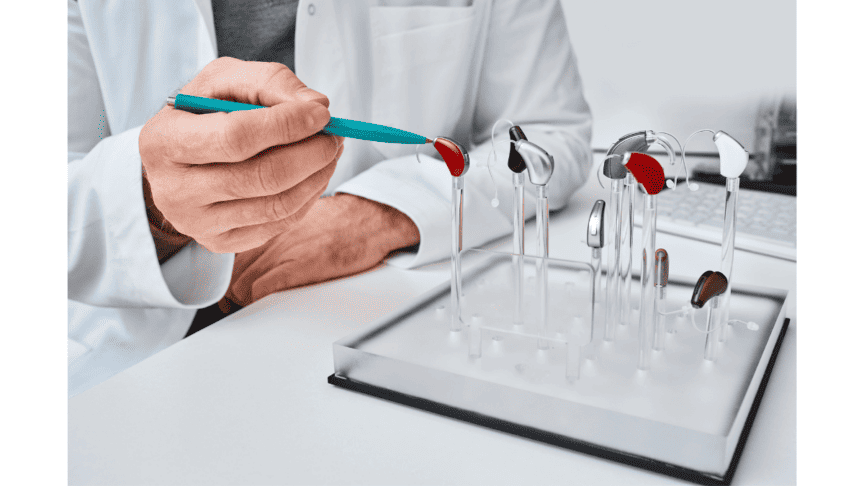Hearing aids are invaluable devices that have transformed the lives of millions of individuals with hearing loss. These devices provide enhanced auditory experiences and improved communication abilities. However, like all electronic devices, hearing aids don’t last forever.
Understanding their durability and longevity is essential for users to make informed decisions about their hearing healthcare. We’ll explore the factors that influence the lifespan of hearing aids, discuss common signs of wear and tear, and provide tips for maximizing the longevity of these vital devices.
Understanding the Lifespan of Hearing Aids
The lifespan of a hearing aid can vary depending on several factors, including the quality of the device, the level of care and maintenance, and the user’s lifestyle and usage patterns. On average, most hearing aids are designed to last between three to seven years before they require replacement. However, with proper care and regular maintenance, some hearing aids can last even longer.
Factors Influencing Hearing Aid Lifespan
Several factors can influence the lifespan of hearing aids, including:
- Quality and Durability: The quality and durability of the hearing aid components, including the casing, microphone, receiver, and circuitry, play a significant role in determining its lifespan. Higher-quality hearing aids tend to last longer.
- Maintenance and Care: Proper maintenance and care are essential for prolonging the lifespan of hearing aids. Regular cleaning, battery replacement, and professional servicing can help prevent damage and ensure optimal performance.
- Usage Patterns: Your lifestyle and usage patterns can also impact the lifespan of hearing aids. Individuals who wear their hearing aids for extended periods each day or engage in activities that expose the devices to moisture, sweat, or environmental debris may experience more wear and tear.
Signs of Wear and Tear
As hearing aids age, they may begin to exhibit signs of wear and tear that can affect their performance and reliability. Common signs of wear and tear include:
- Reduced Sound Quality: Gradual deterioration in sound quality, such as distortion, static, or feedback, may indicate that the hearing aid components are wearing out or becoming damaged.
- Battery Issues: Difficulty holding a charge, frequent battery replacements, or inconsistent battery life can be signs of battery corrosion or depletion, which may require professional intervention.
- Physical Damage: Visible signs of physical damage, such as cracks, dents, or scratches on the casing or components, may indicate that the hearing aid is nearing the end of its lifespan and may need to be replaced.
Maximizing Hearing Aid Longevity
While the lifespan of hearing aids is finite, there are steps that users can take to maximize their longevity and performance:
- Follow Proper Maintenance Procedures: Adhere to recommended maintenance procedures, such as cleaning the hearing aids regularly, changing batteries as needed, and storing them in a protective case.
- Schedule Regular Check-Ups: Routine check-ups with a hearing healthcare professional can help detect and address any issues with the hearing aids early on.
- Invest in Quality Devices: Investing in high-quality hearing aids from reputable manufacturers can pay off in the long run, as these devices tend to be more durable and reliable.
Knowing When to Replace Hearing Aids
Despite diligent care and maintenance, there may come a time when hearing aids need to be replaced due to age-related wear and tear or changes in the user’s hearing needs. Signs that it may be time to replace hearing aids include:
- Persistent Performance Issues: If the hearing aids consistently have poor performance despite troubleshooting and maintenance efforts, it may be a sign that they have reached the end of their lifespan.
- Changes in Hearing Needs: As hearing abilities change over time, the user’s hearing aid requirements may also evolve. Upgrading to newer models with advanced features or customization options may be necessary to meet changing hearing needs.
- Significant Physical Damage: If the hearing aids sustain significant physical damage or wear that cannot be repaired, replacement may be the best option to ensure continued functionality and performance.
Visit Us for Ongoing Hearing Aid Support
The lifespan of your hearing aids is influenced by various factors, including quality, maintenance, usage patterns, and care. While most hearing aids are designed to last between three to seven years, proper maintenance and care can help extend their longevity. Visit us for more support.

